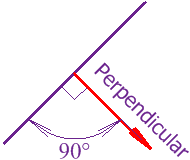In itself, a programming language is orthogonal if its features can be used without thinking about how that usage will affect other features. Pascal is sometimes considered to be an orthogonal language, while C++ is considered to be a non-orthogonal language.
Features of a program that is compatible with its own earlier versions - this is called backward compatible - have an orthogonal relationship with the features of the earlier version, because they are mutually independent; you don't have to worry about how the use of one version's features will cause an unintended effect because of an interaction with those of the other version. Both the features and the programs can be said to be mutually orthogonal.
The length of time data is kept in storage in a computer system is known as its persistence. Orthogonal persistence is the quality of a programming system that allows a programmer to treat data similarly without regard to the length of time the data is kept in storage. Data is stored for varying lengths of time; some is stored very briefly and some is stored relatively permanently. Frequently, a programmer must use different approaches and separate coding to access data depending on whether it is stored for a long time or a short time. Using a programming system with orthogonal data persistence allows the programmer to treat data the same way regardless of its persistence characteristic, saving programming time and making it easier to enforce referential integrity (a type of constraint applied to ensure correct data validity).
In short:
----------------------------------------------------------------------------------------------------------
Orthogonality comes from the Greek orthos, meaning "straight", and gonia, meaning "angle". It has somewhat different meanings depending on the context, but most involve the idea of perpendicular, non-overlapping, or uncorrelated.
Ex: Below Line Segment AB is orthogonal to line Segment CD.
Two vectors are orthogonal if and only if theirdot product is zero
Orthogonal = perpendicular:
per·pen·dic·u·lar/ˌpərpənˈdikyələr/
| Adjective: |
| |
| Noun: |
| |
| Synonyms: |
adjective. vertical - upright
| |


0 comments:
Post a Comment
Thanks for commenting...